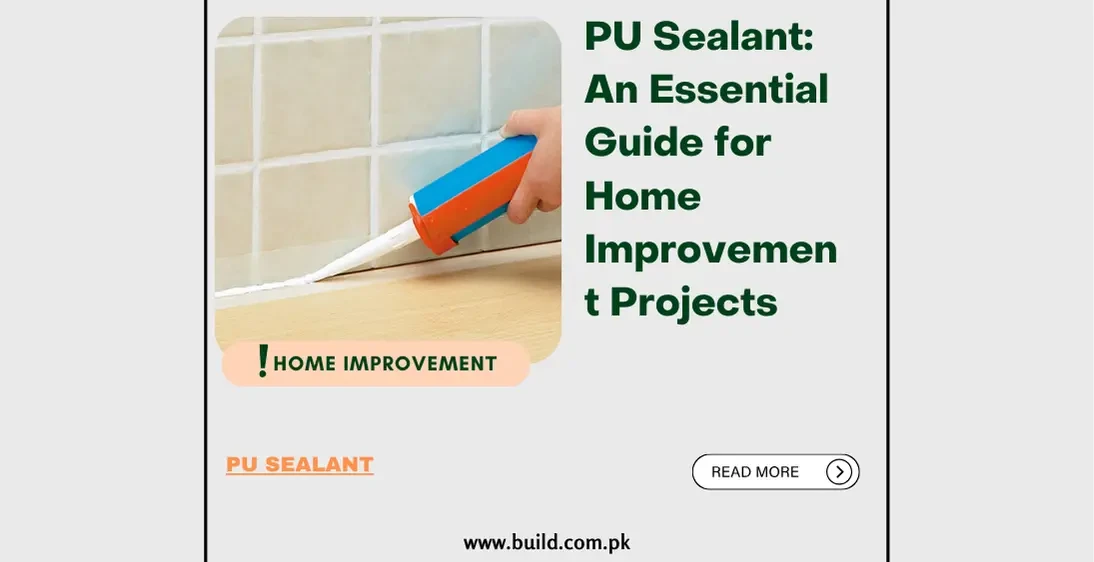PU Sealant: An Essential Guide for Home Improvement Projects

Introduction:
Polyurethane
(PU) sealant is a versatile and durable material widely used in construction
and home improvement projects. Known for its excellent adhesion, flexibility,
and resistance to environmental factors, PU sealant is ideal for sealing
joints, gaps, and cracks in various materials. This guide provides an in-depth
look at PU sealant, its applications, benefits, and tips for use.
What is PU Sealant?
PU
sealant, also known as polyurethane sealant, is a one-component or
two-component adhesive and sealant formulated from polyurethane polymers. It
cures by reacting with moisture in the air to form a flexible, durable, and
waterproof seal. PU sealant is known for its strong adhesive properties,
flexibility, and resistance to weathering, making it suitable for a wide range
of applications.

Applications of PU Sealant
Construction and Building:
In
the construction industry, PU sealant is commonly used for:
- Sealing Expansion Joints: PU sealant is ideal for sealing expansion joints in concrete, masonry, and other building materials. Its flexibility allows it to accommodate movement and prevent cracks.
- Window and Door Frames: It provides a durable and weather-resistant seal around window and door frames, preventing air and water infiltration.
- Roofing
and Gutters: PU sealant is used to seal joints and seams in roofing systems and
gutters, ensuring a watertight seal that can withstand harsh weather
conditions.
Automotive Industry:
In
the automotive industry, PU sealant is used for:
- Sealing Windshields and Windows: It provides a strong and flexible bond for windshields and windows, ensuring a watertight seal and reducing noise and vibration.
- Body
Seams and Joints: PU sealant is used to seal seams and joints in vehicle
bodies, preventing water and air infiltration and enhancing structural
integrity.
DIY and Home Improvement:
For
DIY enthusiasts and home improvement projects, PU sealant is useful for:
- Sealing Gaps and Cracks: It can be used to seal gaps and cracks in walls, floors, and ceilings, preventing drafts and improving energy efficiency.
- Adhering Materials: PU sealant acts as a strong adhesive for bonding various materials, including wood, metal, glass, and plastic.
- Waterproofing:
It is ideal for waterproofing areas exposed to moisture, such as bathrooms,
kitchens, and basements.
Benefits of PU Sealant
Excellent Adhesion:
PU
sealant adheres well to a wide range of substrates, including concrete, wood,
metal, glass, and plastics. This strong adhesion ensures a long-lasting bond
and effective sealing.
Flexibility and Durability:
One
of the key advantages of PU sealant is its flexibility. It can accommodate
movement and expansion, making it suitable for sealing joints and gaps that are
subject to dynamic forces. Additionally, PU sealant is highly durable and
resistant to weathering, UV radiation, and chemicals.
Waterproof and Weather-Resistant:
PU
sealant forms a waterproof seal that prevents water infiltration and damage.
Its resistance to weathering and UV radiation makes it ideal for outdoor
applications where exposure to the elements is a concern.
Easy Application:
PU
sealant is available in various formulations, including one-component and
two-component systems. One-component PU sealant is ready to use and cures with
moisture in the air, while two-component PU sealant requires mixing before
application. Both types are easy to apply using standard caulking guns or
applicators.
Tips for Using PU Sealant
Surface Preparation:
Proper
surface preparation is crucial for achieving a strong bond and effective seal.
Clean the surfaces to be sealed, removing any dirt, dust, grease, or old
sealant. Ensure that the surfaces are dry before applying the PU sealant.
Application:
Cut
the tip of the sealant tube at a 45-degree angle and load it into a caulking
gun. Apply the sealant in a continuous bead, ensuring even coverage and
avoiding gaps. Use a smoothing tool or your finger (wearing a glove) to smooth
the bead and ensure good adhesion to the surfaces.
Curing:
Allow
the PU sealant to cure according to the manufacturer's instructions. Curing
time can vary depending on the formulation, humidity, and temperature. Avoid
exposing the sealant to water or stress during the curing period.
Clean-Up;
Clean
up any excess sealant immediately after application using a solvent recommended
by the manufacturer. Once cured, PU sealant can be difficult to remove, so
prompt clean-up is essential.
Conclusion:
PU sealant is a versatile and essential material for various construction, automotive, and DIY applications. Its excellent adhesion, flexibility, and resistance to environmental factors make it an ideal choice for sealing joints, gaps, and cracks. By understanding its applications and benefits and following proper application techniques, you can effectively use PU sealant to achieve durable and long-lasting seals in your projects. Whether you are a professional contractor or a DIY enthusiast, PU sealant is a valuable addition to your toolkit.









